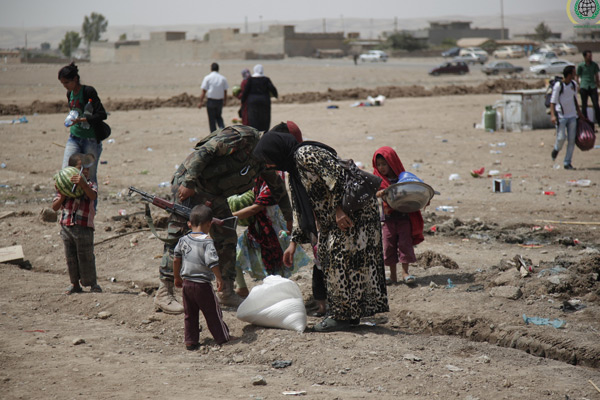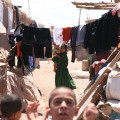The Syrian Conflict: between Al-Assad’s troops and the Islamic State

Relief effort for Syrian refugees in Kawrgosk refugee camp, Irbil, Northern Iraq, 2013. Credit: IHH Humanitarian Relief Foundation
Last March, Syria entered the fifth year of the conflict that has been relentlessly tearing the whole country apart. With some four million refugees outside the Syrian borders the “Syrian Refugee Crisis” is becoming a more and more compelling issue to tackle.
In spite of the continuous evolution of the conflict, which does not allow for a definitive assessment of the situation in Syria, it is nevertheless possible to gather Country of Origin Information through the analysis provided by international NGOs, such as Amnesty International, about the current condition of the country.
Since its beginning, the Syrian conflict has undergone many severe changes and evolutions. Today, the menace that threatens Syrian citizens is twofold: on the one hand, the Government forces led by the President Bashar al-Assad stand as the old and ruthless enemy of the Syrians who were willing to put an end to his dictatorship; on the other hand, a new, cruel foe has been rising amid the several non-state armed groups that fight against the governmental forces, namely the Islamic State (IS).
However, according to the Amnesty International Annual Report 2014/15 issued last February, al-Assad’s governmental forces still represent the greatest threat for Syrian citizens. Despite the efforts of the International Community to set a diplomatic timetable and find a peaceful resolution to the conflict, no achievements were reached through the Geneva II Conference.
The government forces keep breaching an endless number of human rights and international rules. In areas controlled by non-state armed groups, the state forces have mounted attacks on civilians, with large use of weapons prohibited under international conflict regulations. Several attacks were carried out using barrel bombs, other munitions containing chlorine, cluster munitions and incendiary bombs.
Since the beginning of the war, the government forces have been holding entire areas under long-running sieges. The population living in besieged areas survives in dire conditions, with total lack of medical and basic services, and continuously exposed to artillery shelling and air strikes. The sad case of the famous Yarmouk suburb of Damascus — 18.000 civilians (Palestinian refugees and Syrians) trapped inside for more than three years — represents a clear example of the harsh conditions in besieged areas.
Furthermore, in zones controlled by non-state armed groups, the governmental forces carry out attacks on medical and health facilities, effectively denying any kind of basic health provision to the population residing there. Between April 2011 and October 2014, 569 members of the medical staff were killed in areas controlled by non-state armed groups.
At last, the topics of the detention of innocent people and detainees’ conditions deserve to be mentioned. During recent years many Syrians have been victims of unfair trials and have often been detained in inhumane conditions. Many detainees have died while still being in custody, because of torture or ill treatment.
On the other side, non-state armed groups are also reported as war crime perpetrators.
As with the government army, non-state armed groups are blamed for making indiscriminate use of prohibited weapons and for targeting Syrian civilians.
In particular, the IS forces are responsible for the unlawful killing of many journalists, media workers and human rights activists. The killing of these people is indeed usually just the final stage of long-term abductions, which often end with torture, ill treatment and unlawful executions.


